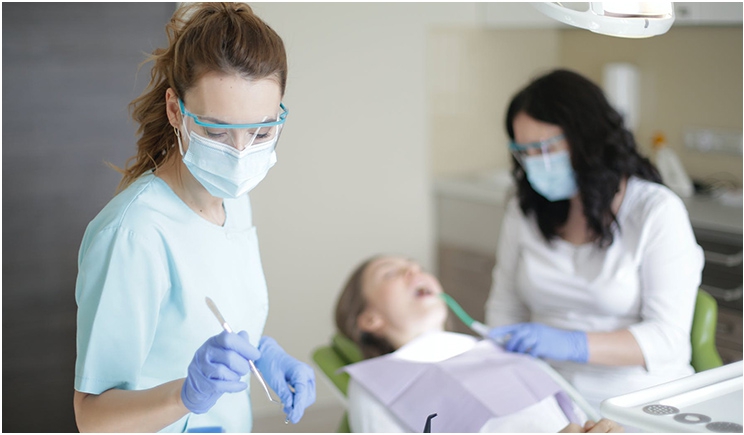
During the COVID-19 pandemic, dentistry has gone through many changes. Dental practices have worked through a shutdown, reopening, pent-up demand, hygiene patient slowdown, and a new spike in COVID-19 cases across the country.
We don’t know exactly what the next few months will look like, but I have tremendous optimism about the next few years. While 2021 may be a bit bumpy, we are projecting that 2022 may be a record year for many dental practices.
To ensure that any individual practice can achieve and maintain success, it is important to understand a few of the key principles of a business turnaround or recovery. In a turnaround, businesses should focus on fewer key Items and recognize that those key items are essential to their short-term and long-term success.
Production Is Key
Why is production so important? Production is critical to dental practice recovery because if it is at the right level, the practice will be fine. Production creates revenue, which creates cash, which creates income. Any practice that has the right level of production, revenue, cash, and owner income has not only survived, but it also will be successful and able to maintain that success.
During the pandemic, Levin Group has encouraged clients and dental practices to identify every possible way to increase practice production. In the past, this was not as important because practices were performing well even when production opportunities were missed.
During a recovery or practice turnaround, it is more essential than ever to take advantage of every opportunity to increase production. Keep in mind that most practices are seeing a lower volume of patients than in the past (around 80%) and that approximately 15% of patients are not returning to practices right now. This alone should create high motivation to identify all the pathways for increasing production.
Where Does Production Come From?
I could’ve written this article on 50 ways to increase practice production. However, first it is important to understand the theory behind production. Production comes from two areas—systems and people.
Levin Group believes that systems are an essential factor that drive practices to high levels of success. In our 30-year ongoing study of top 10% performing practices, we found high levels of consistency in excellent systems that are continually upgraded.
It’s not an accident that these practices put so much emphasis on systems. They do it because they recognize that production can only be achieved and maintained with highly efficient systems in areas such as scheduling, case presentation, hygiene productivity, customer service, insurance management, collections, overhead analysis and reduction, and teambuilding.
Every practice should start with the major systems such as scheduling or patient reactivation and work from there. Let’s look at three systems that can be improved to maximize production.
Scheduling
One simple thing that can be done to help improve scheduling is to complete procedural time studies. These studies routinely show clients that they can save 10 minutes per hour. This may sound small, but by reorienting the scheduling system to save 10 minutes per hour, the practice picks up 32 days per year of excess doctor production time in a four-day-a-week practice.
This is the equivalent of two extra months per year or two extra years for every 12 years in practice. Just imagine, in a 36-year career you could have six additional years of doctor production without working one more minute.
Patient Reactivation
There are many excellent patients who have decided not to come back due to safety or financial concerns. In fact, data indicates that we are currently seeing approximately 15% of patients unwilling to return.
Designing a system of consistent communication such as calls, email, and texts with scripting that highlights practice safety and financial options will go a long way toward bringing those patients back. The impact of this system on production can be well in the six figures for many dental practices.
Reducing No-Shows
There are practices that will lose one to two years of production over a 30-year career simply from no-shows. But that’s not the whole story. According to the Levin Group Data Center, 81% of general dental appointments are single-tooth treatment.
It is difficult to identify a single-tooth procedure where, if a no-show were to occur, you wouldn’t lose money. By implementing a system to reduce no-shows to under 1%, which can typically be done in 90 days, the practice will add approximately six extra days per year of doctor production time.
Summary
The importance of systems in creating practice production cannot be overstated. The same systems used by top 10% practices can be used by any practice to improve performance. By documenting systems to help the staff understand each step and follow the systems as they are designed, production will increase immediately.
Whenever we see a practice that had been performing well and has dropped off, we often find it is simply because team members were not following the systems as closely as they previously had. When they return to following the systems or the systems are upgraded to reflect the current environment, production goes back up and remains steady. This is what successful practices do and what every practice should be doing to ensure future success.
Dr. Levin is the CEO and founder of Levin Group, a leading practice management consulting firm that has worked with over 30,000 practices to increase production. A recognized expert on dental practice management and marketing, he has written 67 books and more than 4,000 articles and regularly presents seminars in the United States and around the world. To contact Dr. Levin or to join the 40,000 dental professionals who receive his Practice Production Tip of the Day, visit levingroup.com or email rlevin@levingroup.com.
Related Articles
The Basics of Dentistry Are Still the Basics
What Will Dentistry Look Like After COVID-19?
The One Thing to Avoid During COVID-19











